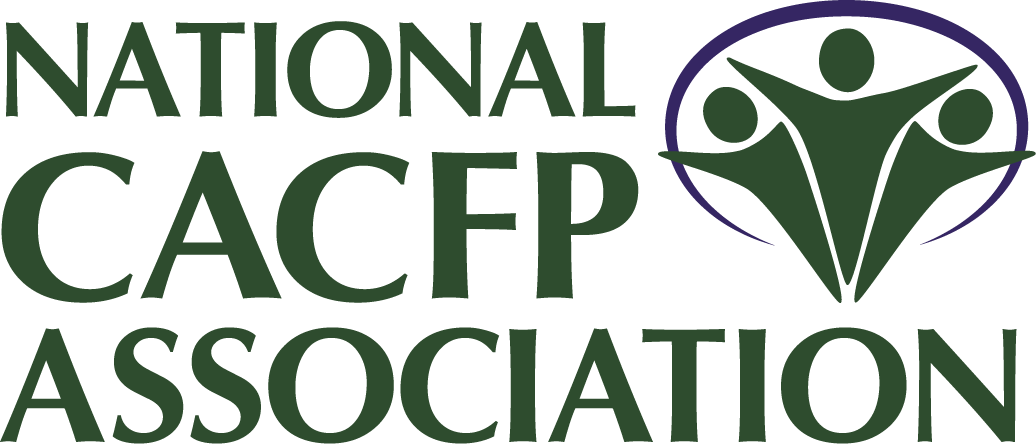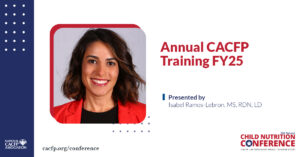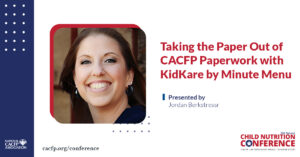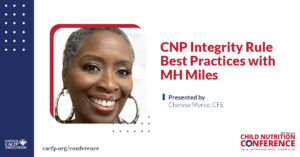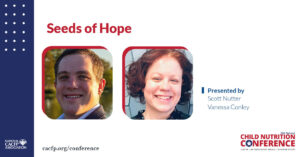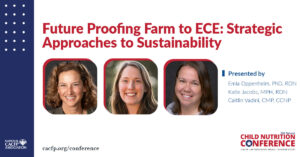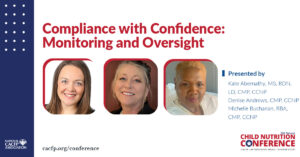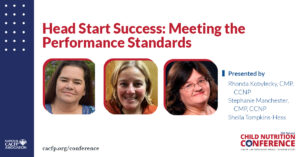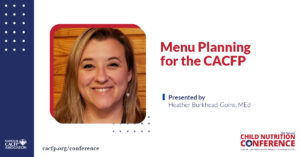2025 NCNC
CORE Training: Financial Viability
Get an overview of the CACFP Performance Standards and focus on the requirements specific to financial viability. Discover various ways to demonstrate and evaluate financial viability as well as identify the appropriate records to maintain.
Read MoreAnnual CACFP Training FY25
Looking for comprehensive CACFP training for new or seasoned CACFP operators working in child care centers, family homes, or adult day care centers? Review annual training topics including meal patterns, meal counts, claims submission, review procedures, recordkeeping requirements, monitoring requirements, reimbursement system, Civil Rights, important updates in the CACFP, as well as medical statements and food allergies.
Read MoreTaking the Paper Out of CACFP Paperwork with KidKare by Minute Menu
Are you tired of keeping track of CACFP paperwork? What if we told you we could cut the time you spend on paperwork in half? Learn how KidKare by Minute Menu solves the problem—by taking all the CACFP paperwork and reporting digitally. Whether you sponsor homes, centers, or both, we have a solution for you. With 30 years of experience, we are continuing to make CACFP easier and more manageable.
Read MoreCNP Integrity Rule Best Practices with MH Miles
Want to ensure the oversight you provide is held to the highest standard? Get best practices to comply with state agency financial review requirements associated with the child nutrition program integrity final rule.
Read MoreSeeds of Hope
Discover how to integrate Farm-to-CACFP to enhance child nutrition and education. Get guided through the essential components to get started (seeds), strategies to implement and sustain your program (growth), and the benefits your program can achieve (harvest). Learn about budgeting, garden planning, curriculum integration, and the positive impacts on children’s health and development.
Read MoreFuture-Proofing Farm to ECE: Strategic Approaches to Sustainability
Farm to ECE improves children’s access to produce using three fundamental components: local food buying, experiential learning through gardening, and food and agricultural education integration. As modeled by programs with sustained impact, discover how to gather tools to identify partners, policies, programs, and funding to assist educators working with your sponsoring organization or state agency.
Read MoreProgram Integrity Rule and Administrative & Procurement Reviews
Hear how the Program Integrity Rule has affected the Administrative and Procurement Review procedures in Texas and why it matters. Also, get a refresher on the importance of maintaining proper recordkeeping for submission during a review.
Read MoreCompliance with Confidence: Monitoring and Oversight
Efficient program monitoring and oversight are essential in the CACFP and for ensuring the success of your organization. Discover best practices and opportunities of how to conduct reviews that not only meet program requirements, but also support and lift up the child care provider. Expand your understanding of effective oversight and ensure program compliance with confidence.
Read MoreHead Start Success: Meeting Performance Standards
Operating the CACFP in Head Start is a requirement, but do you know the differences between what’s a CACFP regulation and what is mandated by Head Start? Learn what the Head Start performance standards that govern child nutrition are and how they align with the CACFP to provide good nutrition to children. Gain an understanding of the requirements and hear about the latest updates in Head Start performance standards for child nutrition.
Read MoreMenu Planning for the CACFP
Develop meal planning techniques that can be used to serve healthy and appealing meals and snacks that meet CACFP and preschool meal pattern requirements. Learn how to accommodate food allergies, incorporate multi-cultural recipes and locally-sourced foods, develop strategies for creating custom menus, and go home with menus you can use immediately or as inspiration.
Read More